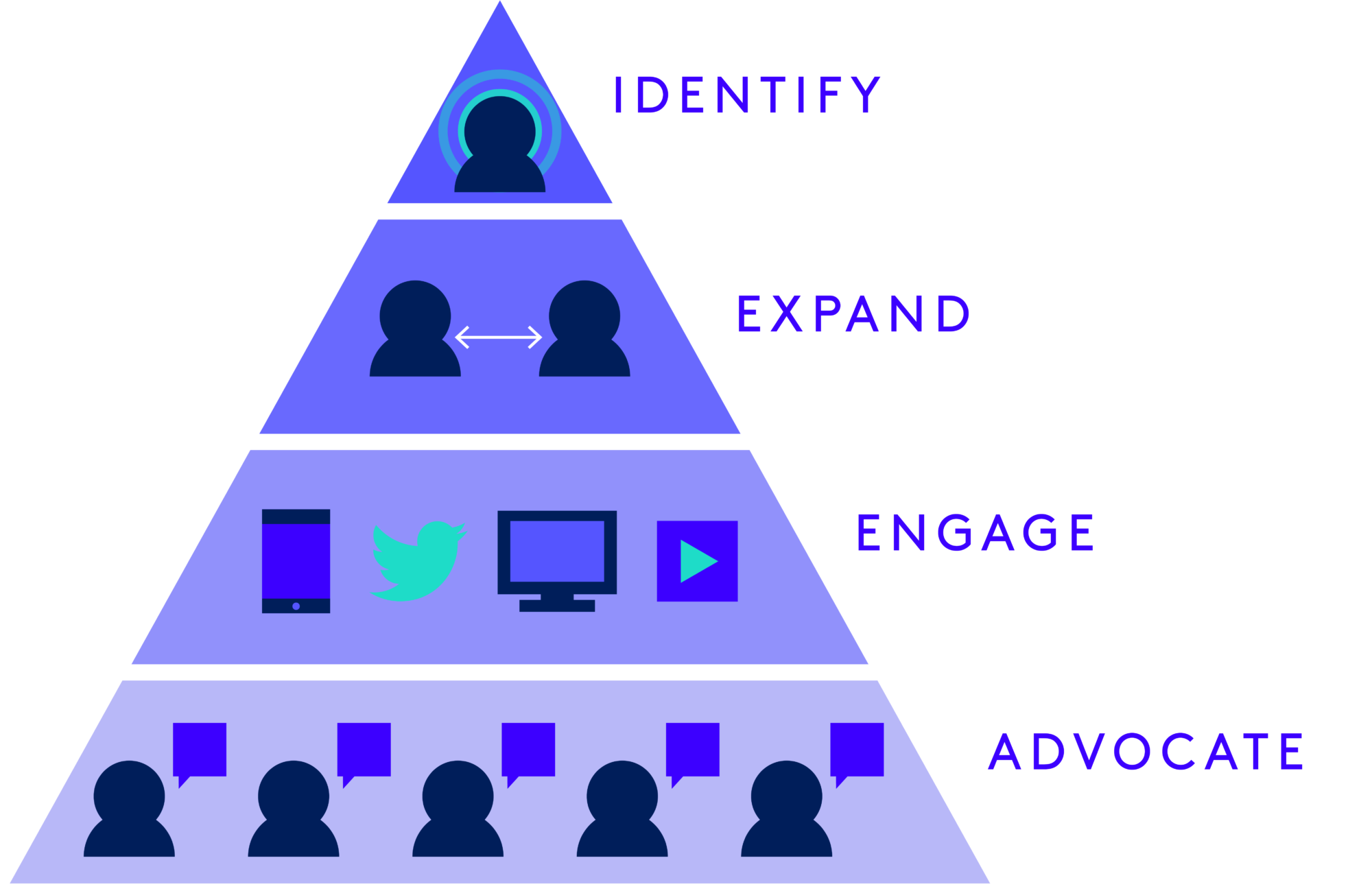
Building Better Buyer Relationships Through ABM
GUEST POST
B2B buyers are overwhelmed by noise. The amount of email outreach, forms, targeted ads, and other interactions cause them to tune out. And when this happens, your message is at risk of not being heard. A major cause for this marketing noise pollution is companies not providing the experience that buyers need and want and establishing the best buyer relationships.
Noise… and then some: Buyer experience matters
B2B marketers can learn a lot from the consumer world and how B2C companies build and grow customer relationships. Thing is, buyers already tell us how they want to be reached. B2B buyers use platforms like Netflix, Spotify, and Amazon in their B2C lives. They live in an always-on, on-demand world with active content experiences. As a result, most traditional B2B marketing doesn’t work for them anymore. The experiences are generally pretty passive-too slow, too hard, and more like leafing through an encyclopedia than asking Alexa. And it’s not working for marketers either. There are too many unanswered questions about marketing performance and standard metrics don’t provide insight into sales readiness.
To cut through the noise, an account-based marketing (ABM) program is essential. To really knock it out of the park with ABM and reach your ideal buyers you need the right tactical plan for developing and using great content as well as the right intelligence and insights to personalize communication, engage advocates, and activate influencers.
ABM (but hasn’t that been done before?)
To truly “do” ABM, marketers and salespeople must deliver super personalized, tailored experiences to their buyers, right down to the account or even contact level.
Although account-based marketing and account-based selling don’t sound all that new, the nuances of how they’re being executed are. With highly integrated account-based operations and tools emerging, B2B companies realize they’ve barely scratched the surface when it comes to realizing the potential of their ABM programs. Whether that’s highly adept content insight platforms, new sales intelligence tools powered by machine learning, or enabling personalized outreach at scale, there is a lot to learn about what is possible.
What does modern ABM look like?
Modern ABM has better tools and a clearer framework. Terminus’ flipped funnel model encompasses modern ABM well:

Modern ABM requires you to:
- Identify the accounts you want
- Expand your relationships with buyers at the account, as there are typically multiple people on the buying committee
- Engage those buyers across a number of mediums
And, finally – assuming a successful customer experience – convert those customers into brand advocates.
Metrics for Modern ABM
Let’s consider the metrics that matter most to successfully measure and grow your ABM strategy.
There are two important metrics to track. Both encompass the ‘expand,’ ‘engage,’ and ‘advocate’ sections shown in the flipped funnel above:
- Content consumption – You need to know if your buyers spend meaningful time with your content. Content consumption could look like the amount of time a prospects spends with an eBook, or watching a video. You can also look at how many assets that a prospect consumed. You can also track who in the buying committee is consuming specific pieces content.
- Relationship strength – Developing a productive and authentic back and forth relationship with your buyer over time is essential and should be monitored. You could do some basic accounting of activities in Salesforce (if they’re adequately logged), or get a full picture using a relationship intelligence tool like Nudge.ai that pulls in different sources of communication, including email, calendar, marketing automation and more. Seeing whether you have real dialogue at an account is a good step to measuring success, as well as determining your next best action for ABM efforts to deepen engagement.
Ultimately, good ABM metrics focus on real engagement, either with content or people. Sometimes, campaigns are considered successful based on passive engagement, like a PDF download that sits unopened on a desktop or a click to a blog post that will never get read. But it’s a lot harder to fake spending time reading and viewing content or exchanging quality emails, phone calls, meetings, and more. The mandate for ABM is quality over quantity. Personalization over generic.
Strategies for expanding and engaging buyers with ABM
Let’s unpack the flipped funnel model in a little more detail:
Identify: Get crystal clear on who you’re targeting
The tip of the funnel represents the most targeted and specific section: identify. Without a very clear idea of who you’re targeting, efforts to expand, engage, and inspire advocates will fall flat. Our friends at PathFactory suggest a very methodical approach to this which involves working alongside sales to develop your Ideal Customer Profile (ICP). An ICP is essentially a very detailed list of attributes that an account must satisfy to be considered a ‘target account.’
Expand: Grow the number of relationships in an account
To expand relationships with different buyers within an account, we recommend:
- Personalizing your outreach: You won’t get anywhere without personalization. Period. Find out the interests and passions of your buyers. You can mine this information from AI tools. Then use this insight and information for personalized outreach. Direct mail or gift campaigns work well and can help you stand out from the crowd. Avoid generic and/or automated marketing emails.
- Building deep relationships: Find at least 1-2 committed champions at an account and focus on them. If you already have a couple users/small pilot with an account, make those people or that pilot successful and engage with them on it. Tee up regular opportunities for interaction with those champions. One of the best ways to encourage buyers to be your champion is to offer personalized training to them that really listens to their needs. Another way is to give them VIP opportunities, access, and status–that could include speaking gigs, being featured in PR or case studies, anything that makes them feel more special.
- Broadening your conversations with others in the account: Communicating with all stakeholders in an account and eventually developing relationships with them is critical. Consider who the key decision-makers on the buying committee are. Make sure you have multiple points of contact–are ‘multi-threaded’–otherwise a deal might fail to close, or slip, later in a quarter. For example, if a champion moves on or you don’t have enough buy-in across the account.
Engage: Use content to engage
Once you’ve reached several contacts in a prospective account, it’s your job as a marketer to keep them engaged. One of the best and most scalable ways to do that is with great content. As we all know, not all content is created equal. So it’s important to keep these things in mind to produce and distribute quality content:
- Generate high quality, relevant content (and optimize existing content). How much? Well, research from Google indicates this is on average over 10 pieces of content per person. And, in the scope of ABM, you’ll have to curate or repurpose that much content for the various people involved in the buying decisions. Also, don’t worry. It doesn’t have to be all new content. There are 100+ ways to recycle and repurpose content.
- Capitalize on buyer attention. Once you’ve reached a buyer, continue to deliver highly personalized content while you have their attention. People want to feel that the content is personal to them, and that way they’ll be able to start conversations and share knowledge with others in the account. Consider how you can guide them through a journey of understanding at each point. For example, you could setup auto-triggered messages for specific product actions that help cue and educate a buyer on to do next. You could start a conversation with a buyer at the right time using a conversational marketing or customer messaging platform like Intercom or Drift.
- Build relationships with your buyers on a regular cadence and measure your relationship strength. Then, follow-up over time, on a predictable interval, for example every 2 weeks or every 3 months. Use an app to set smart cadences that remind you to reach out and ‘nudge’ your buyer.
Advocate: Turn happy customers into advocates
The goal here is to leverage highly successful accounts to expand into new ones. Work with your customer advocates and give them opportunities to advocate for your brand by providing positive reviews, great references, and referrals to new prospects. You can leverage advocates throughout the entire ABM process:
- Identify: Create an ICP of your existing customer advocates to identify future accounts for targeting. For example, if you have several advocates of a certain size and industry, you can use them to create a common profile for future accounts to go after.
- Expand: Expand your accounts by working with advocates to get referrals and introductions to other individuals in those accounts. Ask to meet more of a team or bring more stakeholders in the room as you get further down the pipeline. Once you have a champion in the key account, they are likely to continue to sing your praises with their team. What that means is that, if you’ve already made a key person at an account successful, they will likely have good things to say about your organization and the customer experience. Then you can advance the whole conversation to grow the account.
- Engage: Advocates help provide social proof across many mediums. For example, customer reviews on sites like G2Crowd, shout outs on Twitter, and positive comments in forums. You can then use these reviews on your website, in direct mail campaigns, and incorporate them into strategic pieces of content.
Influitive, the advocate marketing experts, have a whole list of further suggestions here and even a full ebook on advocacy and ABM.
To focus on the customer experience, B2B companies need to shift to modern ABM. Focussing on the fundamentals, like content consumption and building genuine relationships, are key to success. There are several tools and strategies available, but starting with the basics of the flipped funnel, will help you make your marketing signals stand out from all the noise.
